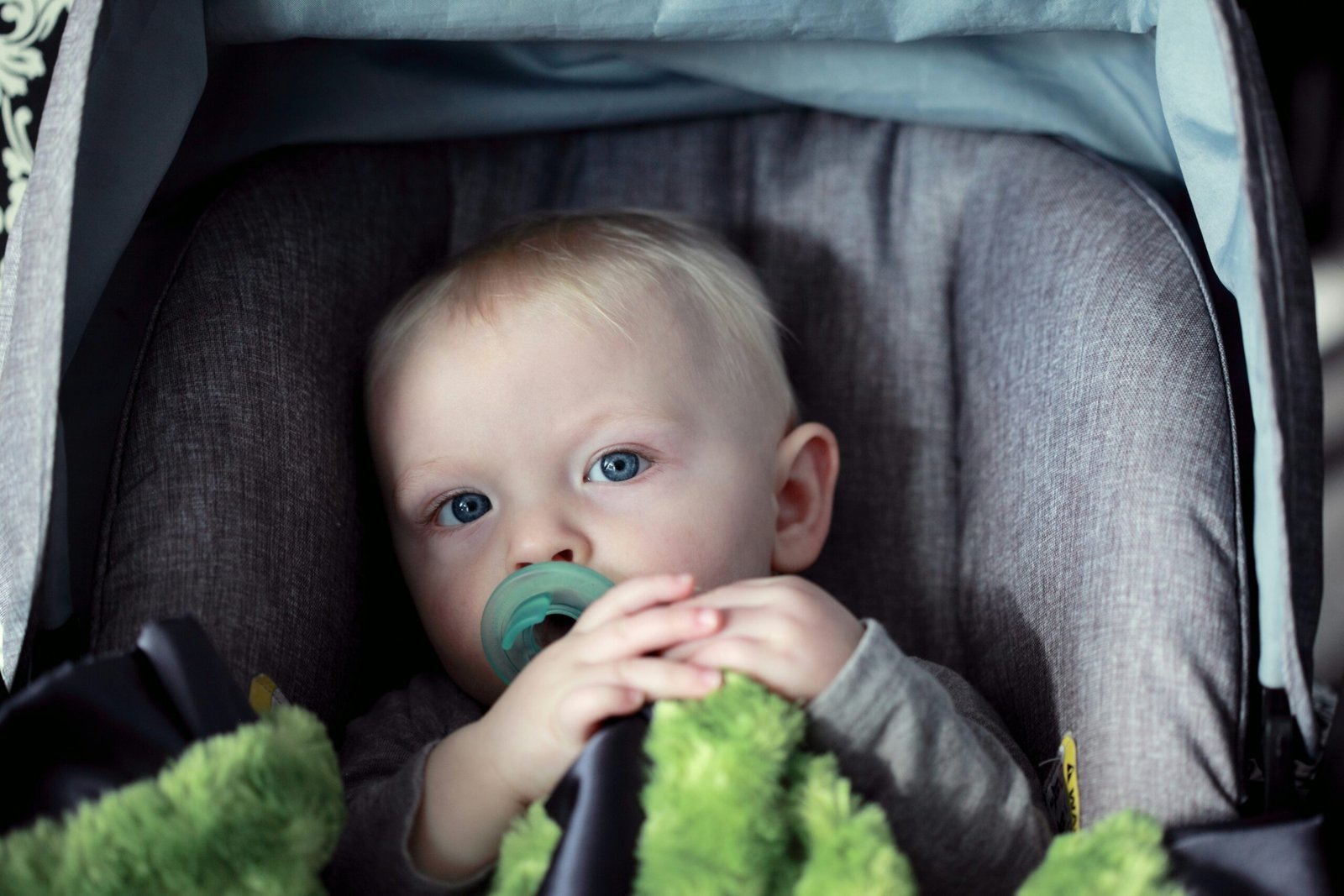Understanding the Different Types of Car Seats
The variety of car seats available in the market caters to different stages of a child’s growth, each designed with safety and practicality in mind. The main types of car seats include infant car seats, convertible car seats, all-in-one car seats, and booster seats. Let’s delve into the specifics and help you understand which type is best suited for your child.
There are so many options on the market. Choosing the right one for your baby is solely up to you. Go with your instincts. Don’t let anyone make you second guess your decision. You got this! We went with the Maxi Cosi Luxe Car Seat & Carrier. The car seat seems to be very comfortable. I wouldn’t be able to tell you firsthand. I wasn’t able to test it out, believe I tried. Our baby loves it though. He always falls asleep within 5 minutes of sitting in it. We were able to find someone on Facebook marketplace selling the base, so it made moving the car seat from car to car a breeze. Our son is now five months old, and he is starting to outgrow the Maxi Cosi. We got the Evenflo Revolve360 for one of our cars. The rotating car seat makes taking him out and putting him in a lot easier. If you’re on the fence about a rotating car seat. Let me tell you that it is very much worth it.
Infant Car Seats are the first car seats for newborns and infants. Designed to support babies from birth up to 22-35 pounds, these rear-facing seats emphasize protection for the youngest passengers. They come with a detachable base for easy installation and transfer, offering convenience for parents on the go. However, once your child outgrows the weight or height limit, transitioning to the next type of car seat becomes necessary.
Convertible Car Seats adapt to both rear-facing and forward-facing positions, making them versatile options for growing children. Suitable for infants from 5 pounds up to 40-65 pounds in rear-facing mode and around 30-100 pounds in forward-facing mode, these seats extend the usability phase. They tend to be bulkier but save you from purchasing another car seat as your child grows. Installing convertible seats may require precise adjustments to ensure a snug fit and safety.
All-in-One Car Seats boast the flexibility of converting from rear-facing to forward-facing and eventually to a booster seat. A cost-effective and long-term investment, they can accommodate children typically from 5-120 pounds, adapting to each growth stage. Despite their larger size and higher initial cost, families appreciate the extended usability and overall convenience.
Booster Seats are designed for older children who have outgrown the forward-facing car seats yet still fall below the height or weight for standard seat belts. Children from about 40 to 120 pounds benefit from booster seats as they ensure that the seat belt fits properly over the child’s shoulder and lap, reducing the risk of injury in case of a crash. Options include high-back and backless boosters, both straightforward to install and relocate between different vehicles.
Understanding which type of car seat to choose is crucial in ensuring your child’s safety and comfort on the road. Assessing your child’s current measurements and predicting future growth can aid in making an informed and effective choice for their ongoing needs.
Key Safety Features to Look For
When selecting a car seat for your baby, prioritizing safety features is paramount. The fundamental aspect of ensuring the utmost protection for your child starts with choosing a car seat that meets current safety standards and regulations. Here are some critical safety features to consider:
Side-Impact Protection: Side-impact collisions can be especially dangerous, hence having a car seat with side-impact protection is crucial. This feature often includes extra cushioning and advanced materials on the sides of the seat to significantly reduce the risk of injury during a crash. Look for car seats that have been tested and certified for side-impact protection.
Five-Point Harness System: A five-point harness system secures your baby at the shoulders, hips, and between the legs, ensuring even distribution of forces in a collision. This type of harness minimizes the risk of ejection and restrains the baby securely. Adjustable and easily manageable harnesses can enhance safety and comfort simultaneously.
Energy-Absorbing Foam: Car seats with energy-absorbing foam, such as EPS (expanded polystyrene) or EPP (expanded polypropylene), provide superior protection by reducing the impact forces in a crash. The foam absorbs and disperses energy, safeguarding your baby from severe injuries.
Easy Installation Features (LATCH): Proper installation is non-negotiable for the optimal performance of a car seat. The LATCH system (Lower Anchors and Tethers for Children) simplifies this process by allowing a more secure attachment to the vehicle seat. This feature helps to ensure that the car seat is both stable and properly fastened, which is vital for safety.
Car Seat Expiration Dates: Similar to other safety equipment, car seats have a lifespan. Materials like plastic can degrade over time, potentially affecting the seat’s performance during an accident. Always check the car seat’s expiration date and avoid using one that has passed its due date.
Checking for Recalls: Regularly verify if the car seat model has any recalls. Manufacturers may issue recalls for defects that compromise safety. Registering your car seat with the manufacturer ensures you receive any vital updates concerning recalls.
In conclusion, a thorough evaluation of these safety features will help parents make an informed decision. By selecting a car seat that meets these critical safety criteria, parents can ensure they are providing the highest level of protection for their child on every journey.
Comfort and Convenience Factors
When selecting the perfect car seat for your baby, it’s essential to consider both comfort and convenience to ensure a pleasant experience for your child and ease of use for you as a parent. One key aspect of comfort is the presence of adjustable harnesses and headrests. These features can be tailored to fit your child securely as they grow, offering them the support they need at different stages of development. In addition, cushioned padding provides extra comfort and can help keep your baby cozy during longer trips.
Breathable fabric materials are also a crucial consideration for comfort, especially during warmer months. These materials reduce the likelihood of your baby becoming overheated and ensure they remain cool and comfortable. Car seats that boast removable and machine-washable covers add extra convenience—making bulk cleaning more manageable and maintaining hygiene more straightforward.
Portability is another factor that cannot be overlooked. If you’re frequently on the go, selecting a lightweight car seat that is easy to transfer between vehicles or compatible with your existing stroller or travel system is invaluable. Compatibility with strollers or travel systems provides parents the flexibility to switch from car rides to walks seamlessly, maintaining the convenience of using a single cohesive setup.
Additional features can significantly enhance the practical aspect of car seats. Look for options that offer cup holders for ease of access to bottles or sippy cups, and storage compartments for holding toys, snacks, or other essentials. Reclining positions can also be a critical feature, allowing you to adjust the seat to ensure your baby is comfortable whether they are alert or taking a nap during travel.
Balancing these comfort and convenience factors will provide a car seat that not only keeps your baby safe and comfortable but also makes your day-to-day routines as smooth as possible. Choosing a model that meets these criteria enhances the overall practicality, promoting a stress-free experience for both parents and their little ones.
Tips for Making the Best Purchase Decision
When deciding on the perfect car seat for your baby, there are several critical factors to consider to ensure safety, comfort, and cost-effectiveness. One of the first steps is to measure the back seat space of your vehicle. The dimensions and shape of car seats vary considerably, and ensuring a good fit in your car is paramount. Whenever possible, try installing the car seat before committing to the purchase. Many retailers offer floor models that parents can test, providing a realistic sense of how the seat will fit and function in their specific vehicle.
Setting a budget at the beginning of your search can significantly streamline the decision-making process. Car seats are available at various price points, and establishing a financial range allows parents to narrow down their choices. Once a budget is in place, thoroughly research different brands and models within that range. Each brand offers unique features and designs, and some may be better suited to your needs than others. Take the time to compare these options, keeping in mind the specific requirements of your vehicle and your personal preferences.
Customer reviews can be an invaluable resource for real-world insight into a car seat’s performance. Look for patterns in reviews; multiple mentions of the same pros or cons can give you a clearer picture of what to expect. Additionally, watching installation videos can provide practical guidance on whether the car seat is user-friendly. Many parents find visual guides more helpful than written instructions, especially for complex installations.
Consulting with other parents and experts can also offer valuable advice. Online forums, parenting groups, and specialists in child car safety can provide recommendations based on firsthand experience or professional knowledge. Their insights can help you avoid common pitfalls and make a more informed decision.
Finally, consider purchasing from reputable retailers. These stores often offer more comprehensive warranty and return policies, providing additional peace of mind. Knowing you can return a car seat if it doesn’t meet your expectations or if any issues arise is an important safety net. By following these tips, you can approach your purchase with confidence, ensuring that you choose the best car seat for your baby’s needs.




I like this web site very much so much wonderful info .